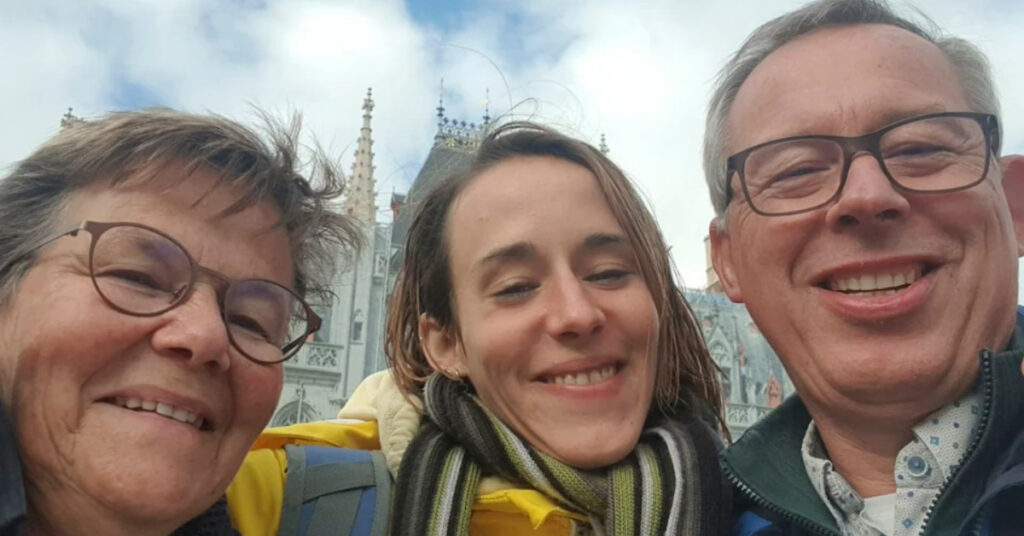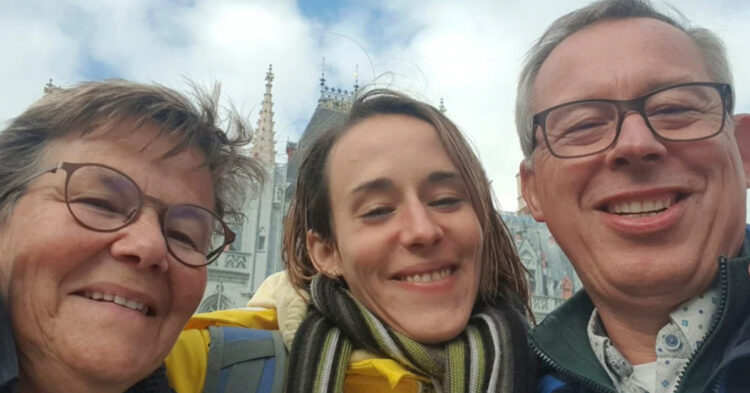Esther Beukema, a 33-year-old woman who had battled an eating disorder for most of her life, spent her final weeks surrounded by her loving family, unusually happy and at peace.
On December 10, 2021, she chose to end her life through euthanasia in her childhood bedroom. Wearing a Mickey Mouse jumper and mismatched socks, one her father’s and one her mother’s, Esther lay in her mother’s arms as a nurse administered a lethal injection.
Five minutes later, she peacefully passed away.
The parents explain why they supported their daughter’s decision

Her parents have shared why they are “at peace with it.” After years of witnessing her relentless suffering, they supported her decision and now advocate for understanding others who make similar choices.
Even though it was quite difficult for them, her mother said, “It wasn’t a question of whether I supported it. She was so clear, so determined. It was her decision. And it was the right one for her.”
Esther lived in the Netherlands, where euthanasia is permitted for people suffering from mental illness.

According to the Dutch Termination of Life on Request and Assisted Suicide (Review Procedures) Act of 2002, euthanasia may be granted for both psychiatric and physical illnesses if the patient’s suffering is deemed “unbearable with no prospect of improvement” and there is “no reasonable alternative.”
The law enforces strict protocols, though. They require evaluations by two physicians to ensure that all treatment options have been explored. And in Esther’s case, these procedures were carefully followed.
Esther’s battle with anorexia and mental illness shaped her decision

Esther had struggled with anorexia since her teenage years. For over a decade, she was so determined that she no longer wanted to live because of her struggles with the disorder.
She was later diagnosed with symptoms of Borderline Personality Disorder (BPD), and her family described her mental health struggles as “exhausting.”
“She told us, ‘I can’t keep living with these thoughts. Every day is a battle,’” Ellen recalled.
Her parents had different reactions to her decision

Ellen, her mom, was quick to support Esther’s wish for euthanasia, especially after Esther had attempted to take her own life several times before. But Rob, her dad, took longer to fully understand and come to terms with Esther’s decision.
Rob explained in an interview with The Telegraph that he “tried to show Esther a little bit of blue sky” and told her there’s “always hope.”
He went on to say, “But Esther didn’t see it that way. And in the end, it wasn’t about what we wanted—it was about what she needed.”
In the end, Rob came to terms with Esther’s choice, recognizing how unbearable her suffering was. Both parents found peace knowing Esther was surrounded by love in her final moments.
Esther’s application for euthanasia was a difficult process

After her first application for euthanasia was turned down, Esther applied again once she turned 30.
Her application was approved, but only after thorough assessments by medical professionals, including psychiatrists, who made sure her suffering met the legal criteria.
Esther then moved back in with her family to enjoy her remaining days with them. She also planned her own funeral.
Her mom explained, “She wanted us to be part of everything — the decision, the process, and even the small details of her funeral.”
Esther’s final moments were peaceful and surrounded by love

On December 10, 2021, Esther was with her family in her childhood bed.
Rob mentioned that he knew her death was peaceful, sharing: “I saw her face. No anger. Very happy.”
Ellen shared: “She didn’t have to die alone; she was with the people she loved. And that is what you want for everyone.”
“She even picked her favorite music to play in the background,” Ellen recalled. “It was exactly the way she wanted it to be.”
Her parents found peace despite their grief

Ellen shared: “We are at peace with it, I think. For us, I think it’s the feeling that there is a life before, and a life after. It’s not that the life after is very bad, but you have to discover how to start again. You have to learn to see the good things and to enjoy them.”
Rob agreed, saying: “Of course, we miss her every day. But we also know she’s not suffering anymore. And that, in its own way, is a comfort.”
Mental illness and euthanasia remain deeply complex issues

Euthanasia for mental illness is still a controversial topic. Critics argue that more should be done to improve psychiatric care and offer hope to those suffering. But Esther’s case shows how, for some, the pain of living becomes too much to bear, even with treatment.
Esther spent her last days creating memories with her family

After her euthanasia application was accepted, Esther moved back to her family’s home to make the most of the time she had left.
“She had a sense of calm,” Ellen said. “We laughed together, cried together, and talked about everything. She wanted to make sure we remembered the good times, not just the hard ones.”
Her story is a reminder of love and loss

Rob concluded: “It’s not about forgetting; it’s about carrying the love forward. Esther taught us that even in the darkest moments, love can still shine through.”
Esther’s story reminds us of the deep complexity of personal suffering and highlights the need for compassion and understanding when facing life’s most difficult choices. Sending love to all those who are suffering, and we hope Esther’s family is at peace now knowing she is no longer in pain.
















































